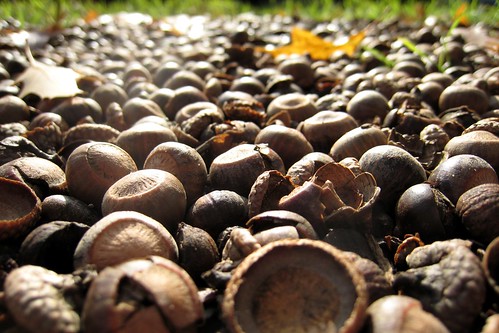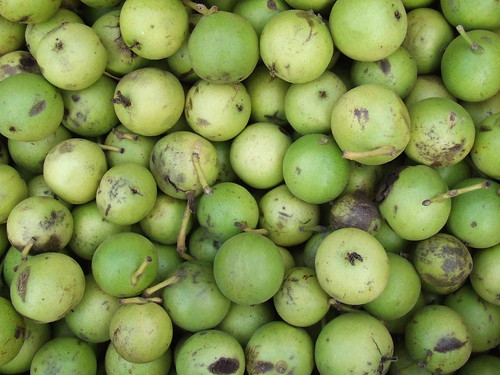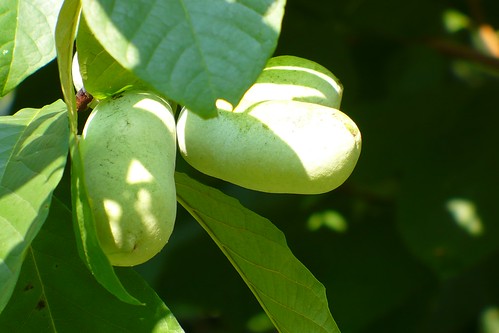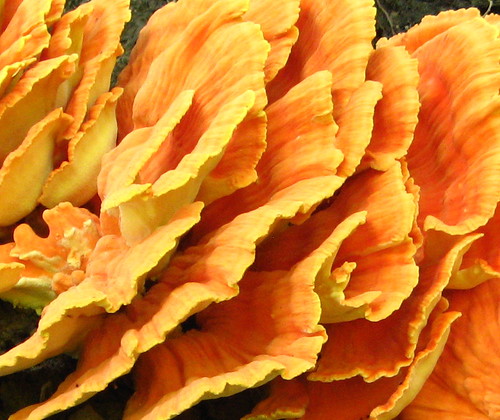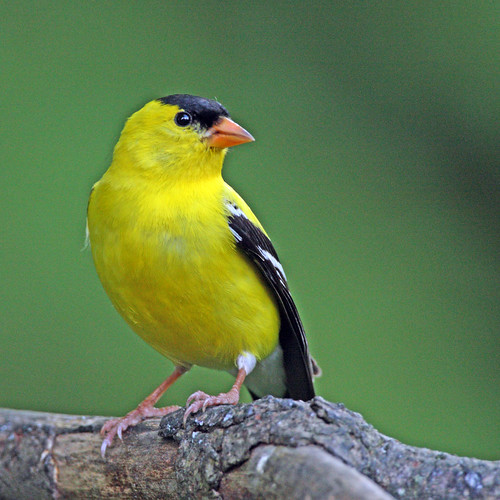
Mockernut hickory nuts
We've been noticing lots of hickory nuts on the ground on our walks lately. There are three species of hickory common to the Washington, DC area: bitternut, pignut, and mockernut. The nuts of two species taste terrible, one pretty tasty. But how do you tell them apart?
First, some basic structure: like
black walnuts and many other nuts, hickories have two coverings around their nutmeat. The outer husk is bright green and wonderfully spicy-smelling when the nut falls off the tree, but ages to a hard, dark brown shell. Often, you can see four lines in the husk, running from top to bottom, cutting it into quarters. The inner shell is a lighter brown, and difficult to crack. So before you go to all that trouble, look for these differences:

| Mockernut |
Bitternut |
Pignut |
Vanderbilt has more
comparison images for all the North American species of hickory.
Mockernut (
Carya tomentosa), on the far left in this picture, is usually the largest nut, with the thickest husk. The husk often breaks into four pieces and starts falling off the nut on its own.
Bitternut (
Carya cordiformus), in the middle, has ridges along part of the four lines in its husk. The husk is thinner than a mockernut's.
Pignut (
Carya glabra/ovalis) has a little snout on the end of the husk. On the few I've messed around with, the husk was even thinner than a bitternut's, and very hard to remove from the shell underneath.
And which one should you try eating? Bitternut is bitter; pignut is only fit for pigs. But mockernut? It's pretty good. The only problem is, you can't crack them with a normal nutcracker -- they're too hard. (The name comes from the Dutch
Moker noot, or "heavy hammer nut".) In the field, we've been able to smash them between two rocks with some success. At home, we use a heavy hammer.

Hickory tree in Sligo Creek
In the wild: Hickories are scattered throughout the woods of the Washington, DC area. I found all three species within about a mile of each other in our local Sligo Creek Park.
This is probably the easiest time of year to identify them, because their fallen nuts will catch your eye -- as long as the squirrels haven't gotten to them. The trees have deeply furrowed bark with patterns that almost look like braids.
All species have compound leaves, but they have differing numbers of leaflets (pignuts have 5-7 leaflets per leaf, as pictured here; mockernuts 7-9; bitternuts 7-11). They turn a pretty yellow in the fall.
In your yard: Hickory is on the list of trees we might plant as we try to replace the shade from the
oak tree that came down in our yard during Hurricane Irene -- but we're looking more at shagbark and shellbark hickories, which produce larger, tastier nuts.
Shellbark and shagbark are both listed in the USDA plants database as native to the Washington, DC area, but we've never seen them actually producing nuts. There is a tree that looks like it's either shellbark or shagbark right along Beach Drive in Rock Creek Park, but we've never seen nuts under it.
The main thing to know about planting hickories is that they all grow fairly slowly, and it can take them thirty to forty years before they start producing nuts.
We like to picture ourselves still living in this house forty years from now, but if we plant a hickory tree, it will be mostly for the next generation.








